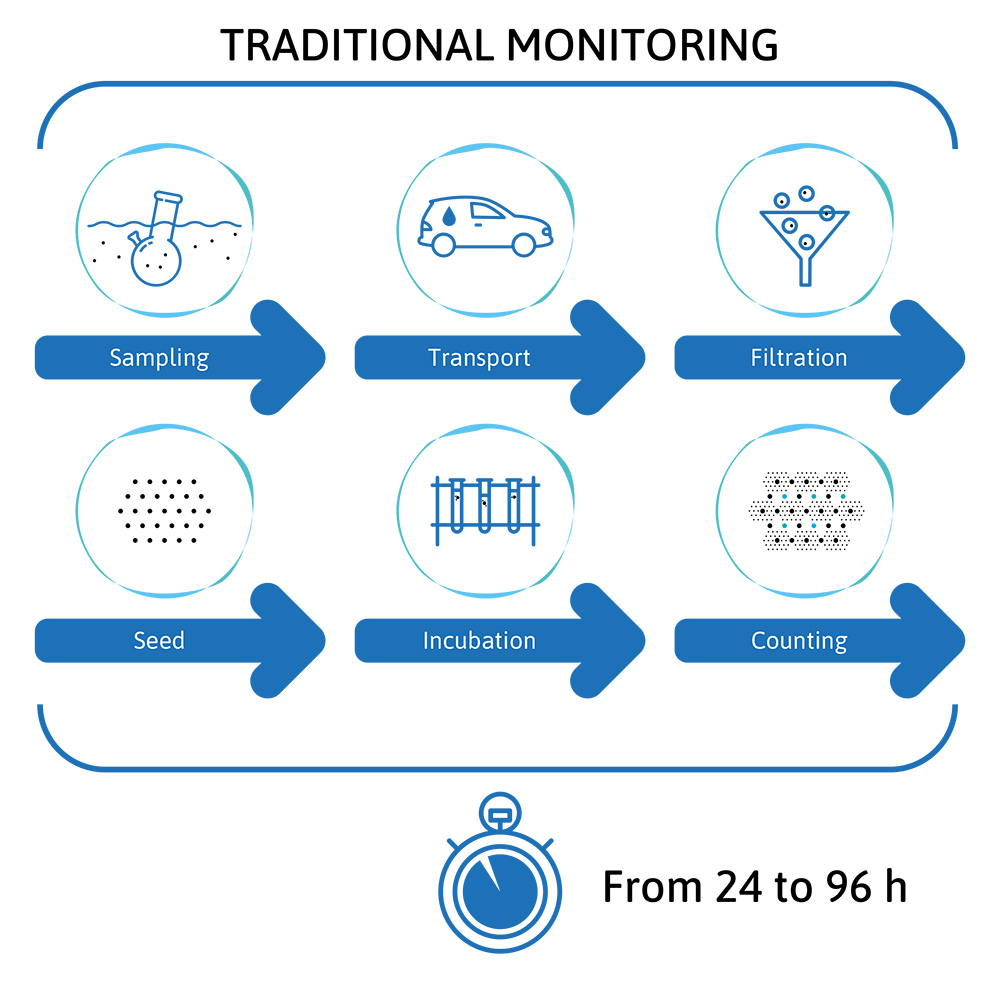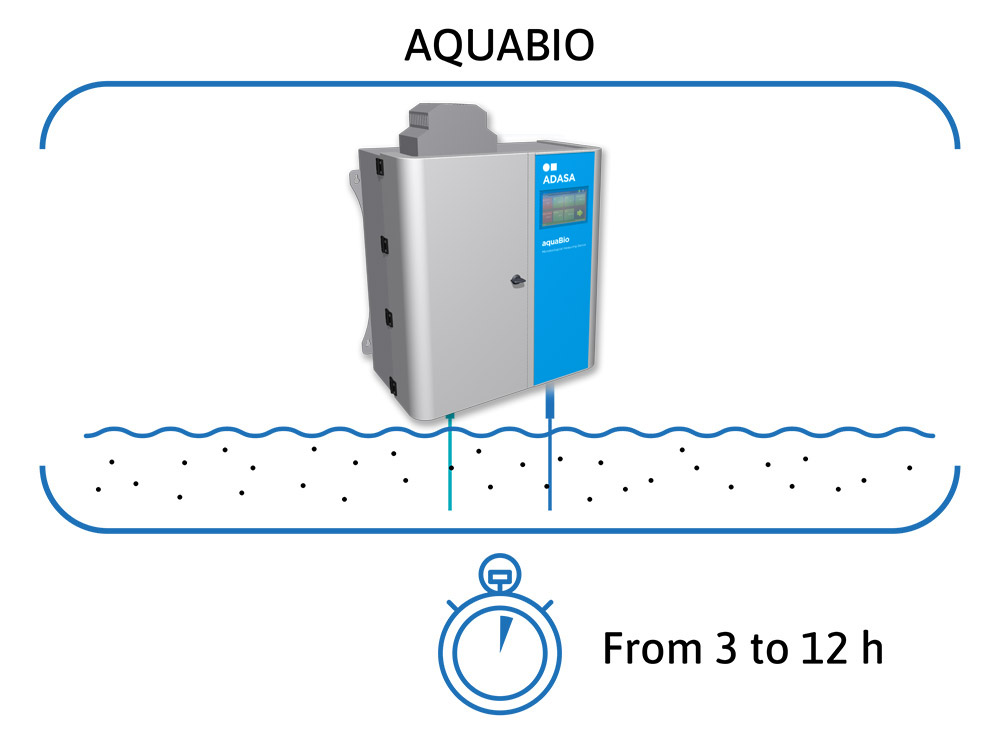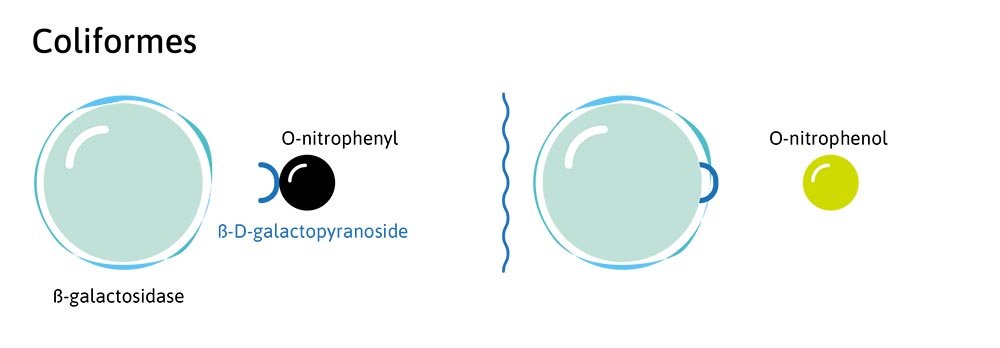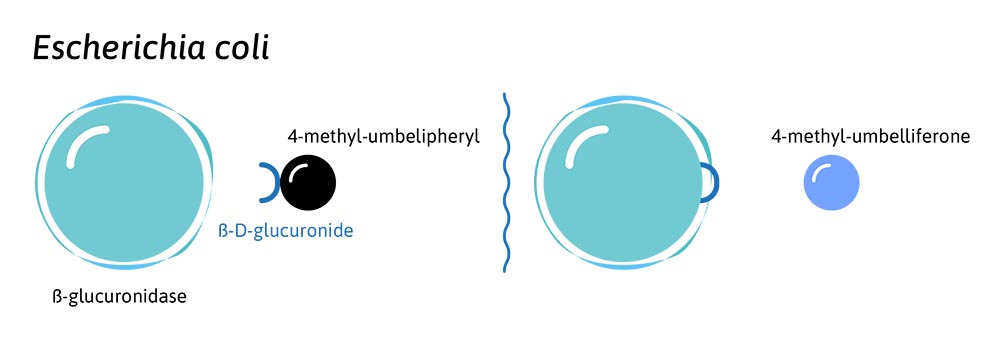Measuring equipment
AquaBio is a measuring device that provides a health-risk alert through simultaneous measures of E. coli and total coliforms, made continuously and automatically, and with low maintenance requirements. The analytical method is based on the specific degradation of the substrate and colorimetric and fluorimetric detection.
The presence of E. coli and enterococci as indicators of faecal contamination signals the alert to a possible risk to human health. This aspect is reflected in the Directive 2006/7/EC, concerning the management of bathing water quality.
AquaBio monitors the microbiological contamination when there are discharges of waste water originating from rainwater, thereby helping to improve the quality of the natural environment. This is guaranteed by its speed of detection in comparison with the current situation and by its continuous monitoring.
The equipment detects the concentrations of the various micro-organisms through an optical measuring system. It includes a water circuit with the various elements for carrying out analyses (pumps, valve pipes and measuring system), and an electric-electronic part with transducers and adaptors that compile and interpret the sensors’ signals. The unit incorporates means for automatically disinfecting the measuring system and guaranteeing independence between samples.
The equipment captures samples, manages the entire system and automatically processes and sends the data according to the programme that has been set. That means that it only requires minor and planned periodic maintenance.
The equipment is expected to be adapted during the project to measure enterococci based on the same principle, as well as the sea water’s features.
El mètode analític emprat per l’aquaBio es basa en la degradació específica del substrat i detecció colorimètrica i fluorimètrica quantificant la concentració de coliformes totals, E. coli i enterococs
The measuring principle is based on the use of specific substrates – for both E. coli and total coliforms and enterococci, which carry an associated molecule that generates either colour (total coliforms) or fluorescence (E. coli and enterococci) in the environment.
So long as the molecule is linked to the substrate, it is inactive (colourless), but when the substrate is degraded by the replication of the micro-organisms it is released, producing colour and/or fluorescence, which is detected by the optical system. It is recorded, then, when this is detected and is correlated with the concentration of micro-organisms, by expressing the result in MPN (most probable number). The system’s sensitivity allows it to detect the presence of one bacterium and quantifying 108 MPN in 3 hours.
To determine total coliforms, absorption is measured at 405 nm with blue light. The reagent used contains o-Nitrophenyl β-D-galactopyranoside (ONPG) which coliforms metabolise to produce a yellow chromogen thanks to the enzyme β-galactosidase.





